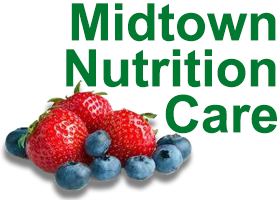CHOLESTEROL
Cholesterol is a waxy molecule that is found in food and in our bodies. Our bodies make all the cholesterol we need. Our bodies use cholesterol to make cell membranes, hormones and digestive juices. Unfortunately, cholesterol levels in our body may become elevated due to a combination of our diet and our genetics, which can be bad for our health.
TYPES OF CHOLESTEROL
There are two main types of cholesterol that we make in our bodies: High-Density Lipoprotein (HDL) and Low-Density Lipoprotein (LDL).
HDL cholesterol acts like a vacuum cleaner and is a health benefit. HDL cholesterol is therefore called “good cholesterol”. LDL cholesterol, called “bad cholesterol”, deposits cholesterol in our arteries. If the deposited cholesterol becomes too high, it can lead to clogged blood vessels. Clogged blood vessels can cause heart attack or stroke.
TO LOWER LDL CHOLSTEROL
– Increase dietary fiber. Fiber acts like a sponge and mops up excess LDL cholesterol and removes it from the body. Dietary fiber is found in whole grain products, such as whole grain breads and pastas, oats, beans, fruits and vegetables. Aim for a minimum of 25-35 grams of fiber per day.
– Decrease intake of foods high in saturated fats, which are found in fried foods, creamy/greasy foods, butter, full fat cheeses, bacon, sausage and coconut. Aim to keep saturated fat intake below 20 grams per day.
– Reduce your body weight if you are overweight. Even a 5-10% reduction in weight can lower LDL cholesterol.
TO RAISE HDL CHOLSTEROL
– Increase exercise. Even a modest, consistent, increase in physical activity, such as 30 minutes a day, a few times per week, can raise HDL cholesterol.
– Replace most of your saturated fat intake with unsaturated fats. These healthy fats are found in foods like nuts, avocados, olive oil and sunflower oil.
